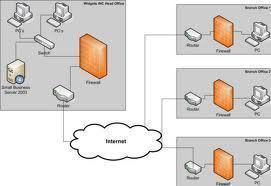HTML stands for Hypertext Markup Language, and is used to describe the visual appearance of a document to be displayed by a internet browser. HTML documents consist of document tags which act to directly describe the visual appearance of a web page or to provide a directive command such as inserting imagery or a link to another web page within a document. HTML documents are saved in text format and are designed to be viewed or edited on any operating system that is able to connect to the Internet. XHTML refers to the latest version(s) of the HTML definition that are designed to make use of the extensible markup language definition rules and syntax in order to permit web developers to continue to do advanced web page development.
What Are the Required Parts of an HTML Page?
HTML documents are defined by tags that consist of an opening and closing tag in order for the document to be considered “well-formed.” A closing tag will have the same name as an opening tag, but will be preceded by the / symbol. All HTML documents must have a HTML and BODY
tag in order to be displayed in a web browser. Other tags that are common to HTML pages include the document HEAD, TITLE, and P (paragraph) tags. For example:
<HTML>
<HEAD>
<TITLE>My Top Bits Web Page</TITLE>
</HEAD>
<BODY>
<H2>Page Heading</H2>
<P>My First Web Page paragraph</P>
</BODY>
</HTML>
The <HTML> tag in the example code declares the document to be type HTML to a web browser. The <HEAD> tag contains a <TITLE> tag that will be displayed in the top of a web browser and can also contain Javascript and other meta data information for the web page. The <BODY> tag contains the displayable information in the HTML document and includes a header tag <H2> declaration and defines a new paragraph tag <P>. Although an HTML page can be displayed without all tags having corresponding closing tags, it is not considered to be a well-formed document and may have display errors if all tags are not closed.
How Does HTML Embed Pictures?
Internet Browsers are designed to embed images in GIF, JPEG, or PNG format, with the latest browsers also supporting the W3C approved SVG format for display. HTML code will provide a reference to an image that is stored on a web server along with size and other meta information in order to display the picture properly in a web page. If the image can not be retrieved from the web server, alternative display information is included in order to provide a text display or alternative information for those who are unable to view pictures. One of common tags used for displaying images in HTML documents is the <IMG> tag. For example, to include an image in the previously example, add the following line of HTML code in between the opening and closing <BODY> tags:
<IMG SRC="http://www.mywebserver.com/myimage.png” alt=”my test image”>
The image code will attempt to retrieve the image and will alternatively display the text “my test image” to the end user in the event the image can not be downloaded to view.
How Does HTML Hyperlink to Web Pages?
One of the most commonly used aspects of HTML documents is hyper-linking to other web pages or resources on the Internet. The HTML tag used to link to another page is the anchor tag, <A>. In between the opening and closing anchor tag declaration, you include the text or image that will be linked to the web address that you provide. For example:
<A href=”http://www.topbits.com”> Top Bits </A>
This HTML statement will display the words “Top Bits” that can be selected to open a new window in your web browser to display the Top Bits web page. The href attribute is used to provide the URL for the resource being linked to by the anchor tag declaration.
Who Controls HTML Tag Definitions?
The World Wide Web Consortium, or W3C, is an international community with participating member organizations who work opening to develop and implement Web standards. A common problem early in the use of the Internet, was a lack of consistent standards for how to interpret and display web pages. This resulted in inconsistent quality experienced by the end user and increased expenditures by industry to program pages for multiple web browsers. The W3C HTML working group works with industry and academia in order to provide recommendations on the next versions for HTML (or XHTML) to be adopted as international standards and implemented by web browser companies.




FireSword
Does it work with Google Chrome if you use Notepad++?